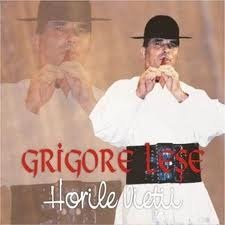Born in 1954, in the village of Stoiceni, located in the picturesque region of Țara Lăpușului (The Land of Lapush), Grigore Leșe is a Romanian folklore singer and fervent promoter of Romania’s traditions and customs. His music and language, although highly representative of the region he was born in, retain the authenticity of genuine Romanian folklore and paint a musical image of the ancient Romanian peasant, with his ancestral virtues and rural way of life.
"'Miorița' (The Ewe Lamb) is a sung version of the most popular Romanian pastoral ballad. It mirrors Romanian peasants’ attitude towards life and death, with a special emphasis on language and the role it plays in bridging the gap between the two."
Leșe, who studied at the Musical Conservatory in Cluj Napoca and is currently a Professor of Ethnology at the University of Bucharest, is also a fine expert in Romanian traditional instruments: the cetera (a type of violin), the fluier (the flute), the gorduna (similar to the double bass), the caval (the sheperd’s pipe), and the contra (the viola) are the instruments that complement his musical repertoire, comprising the most striking Romanian folklore songs. Leșe’s music traces and celebrates the various stages and events in life, from birth (cântece de leagăn, or cradle songs) to marriage (hora miresei, or the bride’s hour), army or enrolment songs (cântece de cătănie), and death songs (bocete, or wailing songs).

“Miorița” (The Ewe Lamb) is a sung version of the most popular Romanian pastoral ballad. It mirrors Romanian peasants’ attitude towards life and death, with a special emphasis on language and the role it plays in bridging the gap between the two: even though the physical body dies, the language of the individual lives on as the only reminder of his life on Earth. Leșe’s version of the ballad is interpreted using his inimitable throat-singing technique and in a language carrying strong dialectal influences. It tells the story of two “eri primari" (cousins) who are shepherds and who, during the transhumance process, decide to kill a younger and more successful shepherd.
"The dramatic, guttural musical tones of the song transform it into a universal masterpiece."
The two cousins allow the younger one to choose how he wants to die: “Tu ţâie ce moarte-ţi vrei/Vrei de puşcă-mpuşcat/Or' de sabie dimnicat” (What kind of death do you want to die/ Do you want to die by the gun,/ Or be killed by the sword). The young shepherd addresses the two cousins with the appellative “fraţâlor, fârtaţâlor,” a dialectal version of the word “fraților” (my brothers). He tells them he wishes to be buried “în strunguţa oilor/ Da' pi, în tărcuţu' mieilor” (by the sheepfold/ inside the lambs’ pen), insisting that they only cover him with his “guba sânguré” (a long sheepskin coat worn by shepherds). Also, he asks them to place “un fluier după curé" (a flute under his belt) and, “susuoară de-a dreapta” (under his right armpit), his “tilinca” (sheperd’s pipe), so that “cand vânt mare a sufla/Tilinca a tilinca/Fluieru' a fluiera/Oile tăte-or zdiera” (when strong winds blow/ the pipe will sing/ the flute will play/ and the flock of sheep will bleat).
The dramatic, guttural musical tones of the song transform it into a universal masterpiece. Anyone around the world could connect to it and perceive the sadness that it is trying to convey. It is a song that spans different languages and cultures.





